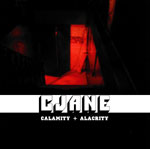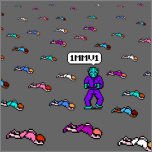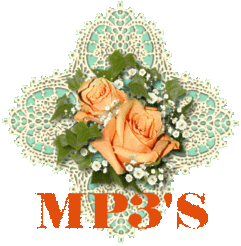Found on the microsound mailinglist, but written for the ampersand notes mailinglist:
Stasisfield (www.stasisfield.com)
There are now so many on-line labels that it would be near impossible to do anything like the surveys I did a few years ago. Take a look at www.archive.org, which hosts No Type (a longtime favourite) and Zeromoon (whose fabulous archive was noted last issue), for just one list of labels (including Dreamland, whose physical first six releases we reviewed). What most of us with relatively limited bandwidth can do is return to a few favoured labels. And let¹s be honest, when you first find this wonderful free resource you try and gather it all, and then realise you don¹t have time to listen to a lot of it I am still getting familiar with the No Type complete back catalogue which I downloaded.
Anyway, Stasisfield has been one of those sites that I focus on. Partly because it is beautifully presented, but mainly because it has a manageable number of releases of sophisticated ambience and glitch, with some dark material and grooves thrown in, with a high level of quality control. In addition it hosts various web-installations which add to the intrigue.
While the label deals in cds also such as the companion to the Audible Still-Life exhibition (Sonic Planar Analysis 02, reviewed in Notes 2), the MP3 releases are a major focus. Now in their 3rd year, Stasisfield does a fine service by offering cd-roms of the previous 2 years. The first volume was reviewed in 2003_g, and now we have Stasisfield: year 2 (sfcdm-301).
As before we have a complete package all the releases from 2003, available as higher quality MP3s than the downloads, playable directly from the disk. Or access through a browser interface which recreates the web-site, so you get to see the covers, which are always well designed, and the on-line art exhibitions which includes some videos as well. And a few special extras into the bargain. The music total is lower than on 01 not surprisingly as new labels usually have a goodly selection of releases which is part of what gets them moving but at 7 hours is not to be sniffed at! And this is what you get
MP3 releases
All these fall into the single/EP category of the regular releases there is none over 30 minutes.
2001 N-s by formatt whose electronica has appeared in & a few times, presents a drifting musical set based on rumbling and clicks, demonstrating once again his merging of glitch and techno.
2002 miles by john kannenberg displays his ringing drifting ambience in the first couple of tracks; augmented by a field recording that forms the base for the third; moving into beated with crackles and tonal layering in the fourth and fifth focussed variation.
2003 microsound_00 by microsound_00 is as the name suggests, a sequence of short pieces based on sine waves, progressions and glitches, to form a distracting set.
2004 La Danza della Sepia Rossa by Mou, Lips! you heard of their demo (eventually released) Peanuts and Shells Geometria here first. Here there are only two tracks, one a joyous combination of dancing notes and concrete sounds, the second a more contemplative excursion.
2005 Diamond Finesse by Glenn Bach: drifting shimmers of glitch, some crackle with static and shimmers. The final ringing bells become buzzy then crickets to computer buzz and then humming a more active track in an attractive set.
2006 Platzhalter by Hinterlandt another & alumni, with two equal length tracks, the first groovy ringing tonal melodies, beats under and undercurrent darkness; while the second is similar but dirty and twisted,
peeppeep tones and a solid metronome, becomes sweeter. This is the groove for this comp
2007 Good Friends We've Lost by David Hahn: two laments, the first for cello and electronica, memorialising a journalist killed in Yugoslavia, places the inevitably mournful cello (sometimes multi-tracked, but also angry and forceful) against a phone-like beeping. The second, guitar and sax, is also restrained and contemplative, the guitar picking as the sax plays heart-tugging lines and is for a young musician who died of HIV/AIDS. A pair of very strong pieces which underline the value of web-labels like this.
2008 Transparent Geometries & Close-Ups by Thanos Chrysakis is the longest ep and consists of a drifting flow of long ambient tones, swelling and falling in the first track. The second is an almost subliminal rumbling piece before Elixir Sonóre regains some volume with another lovely densely ringing rolling ambience: beautiful music.
2009 Careless with a Cigarette by Omnid (again, someone who has been in ampersand), with skittering guitar, spatters, mysterious rumbles and computer rumbles in an eighteen minute work, that has the feel of live piece.
2010 john kannenberg presents One Hour as Compressed Time a field recording inside The Oriental Institute Museum (Uni Chicago) that houses an extensive Iraqi collection. It includes noises of moving around, a tour guide and so on, with subtle overlays of found and recorded sounds (sand, papyrus, electronics) to create an hypnotic drift that is a meditation on history both ancient and modern. A contemplative piece that is only available on this disk
The Aux-in sublabel
Aux-in is a live sub-label, aiming to recreate the grand excesses of the vinyl live album, often including tongue-in-cheek covers with liner notes and tour pics (there are glimpses of the vinyl in the cover images; and check out the Yes simulacra for this years latest release, or the cover of Loam¹s Double Live Bonzo). There were three releases last year:
j.frede brings us a recording from Finland, Audio Journal 002, which uses samples recorded in Lahti (the venue) before the performance. A quiet piece that chugs gently, rings swinging across the soundspace, voices disembodied, echoes and cycles, it rumbles and shivers, displaying its contents at louder volume but working best as a minimal dark backdrop to life. But it stops too precipitately!
Loam gentle pulsating, the background cycles as notes play on the surface, into slow mutation with big woobly sounds before more activity in the third section, getting up quite a dynamic-static groove (looping deep tones). This runs into the final track (part 4) which crystallises the loops into a final restrained climax. There is politics to this, like his ashKroft pieces,indicated by the samples of Gore Vidal that open and close it however the music is not polemical but nicely crafted ambient techno.
Neil Jendon goes live at the Buddy in Chicago with a stunning set of guitar torture slowly building droning in the first part into pulsing and controlled feedback and finally more restrained density. A demonstration of what you can extract from the instrument, remaining highly enjoyable at all times.
Exhibitions
And finally the exhibitions.
The Palimpsest Project had an incarnation in 2002, and we see the 2003 version here. Again, it is smaller, but includes some reworked images (on the basis of the project name) and some audio works which I¹ll focus on. Dale Lloyd creates 18 brief microsound manipulations of samples from the first exhibition minimal in volume and activity overall, creating a small microsound suite; backed up by Micronauts 49 seconds of buzzing pulses in Essay Thirty.
The Audible Still-Life asked 21 artists to create an audio still-life (ie a phonograph), and then rework it as a piece to include on the companion disk..
The web-component includes artists notes on their pieces, photographic images of their still-life (some are videos) and the source recording making an excellent companion to the disk and an explorable artwork. Another bonus feature is a 26 minute live set, Audible Still-Life Live, by Neil Jendon and kannenberg which drifts by, skittering and
The photography seen on the site consists of extended landscape-format images of buildings and natural scenes taken from a point or framed in a way that often disorientates or accentuates features. 100 of these images are another of the bonuses as thumbnails, a step through display and as desktops where the image is the centre strip with white either side (including a subtle watermarking). Nice minimalism enough to say that all 100 are now part of the changing backdrop to my computer working. And here I
should note that Alessandra Gillen shares phot credits with kannenberg.
For whom?
So who should buy this? Stasisfield Œwithdraws¹ older MP3 releases, so if you missed out on these when they were available, this is a highly recommended purchase. But even for those who have, I would suggest getting this for the higher quality sound files, the additional tracks and images, and for an archive of a years great music and collaborative artworks. It is US$10 (+p&p) that is well worth investing.
John Kannenberg
The Stasisfield boss has had releases on his own label, but also appears elsewhere I finally twigged that the Whistling Pariah material that I downloaded from .tiln was him. When I bought Year 02 I also picked up the latest release from john, plus one he was on which completed a set for me.
First. A solo album: Gelidus on Retinascan (www.retinascan.de), described as a sonic interpretation of extreme cold, it comes in a DVD case which allows for a larger format insert, highlighting kannenberg¹s and gillen¹s photography. The six parts, recorded in a single take, flow into each other as field recordings, tape hiss and synthesis are manipulated. Drfiting in and out, high tones and buzz eventually interrupted by a harsh buzz, deep rumbles and clicks in. spatters increase an activer opening. As we progress, a lightly labile hiss becomes a major player, rumbles and high tones hidden in it: these rise and fall, develop and disappear inside the almost static ice-cloud. The second to fourth parts explore this territory eventually easing to tones and a spatter, which becomes almost musical in the fifth part where they layer and pulse. Increasing volume and resonance, joined by crickets(?). The final section allows for a gradual fade and farewell. You can almost feel the cold in this though it is not a distant
or unemotional piece, but rather a finely tuned minimal glitch-ambience.
The other is Folktales 1 from Crouton (www.croutonmusic.com) in past ampersands I reviewed the second and third releases in this series of 3² triple-disks. When the credit-card Kannenberg release was replaced by this as a bundle with Gelidus, well the completist in me was happy to get the full set. Lave has four main parts the opening is ebb and flow hiss, tones and pulses layered and separate, twittering percussion that dances round, some bass; then field recordings dominate for a while water, wind with rumbles and a high tone that fades right out. Reverb bass and synth shimmers emerge, twizzling tones and then some flits enter, develop and take the floor, joined by crickets, electro sqrrls, and a final big humm. Rosenau goes through a variety of sound forms in Two Ice Fields of the Exact Same Size crackly dry ice; prepared guitar solo; buzzing into morse bursts; clatter and repeatedly dropped something; drones; percussion improv into guitar and more solid percussion; ending in high ringling tone, fade, crackle and taps. The third tale is hal Rammel¹s Three Days from Anywhere which starts with about 6 minutes of what sounds like a fly, then shifts into scrabbly creak percussive guitar explorations, that develop harp-like strums (including preparations) that gather rhythm and pace towards the end..
So, like subsequent releases, Folktales 1 is a compelling opportunity for sound-explorers to display the interesting and intricate results of their journeys.
In addition to the music and website design, john is also a fine artist as demonstrated by the site itself, including the covers, and the photo exhibit. Some of the artwork is visible at the Whistling Pariah site, but you can also now buy some through Stasisfield. As I said, a site well worth visiting and keeping an eye on.

 "CJane (formerly Calamity Jane) combine ambient dub with folk, reggae and alternative stylings to form a grim downtempo sound that is at once arresting and depressing. CJane is lead singer Amy Rosalyn's spare vocals and guitars along with the electronic production skills of co-writer Christian Sage (aka Sick Man Of Asia), plus drummer Mikah Azurin's dour rhythms This 3-song EP is a trip through sadness recorded in 1999 and released only now."
"CJane (formerly Calamity Jane) combine ambient dub with folk, reggae and alternative stylings to form a grim downtempo sound that is at once arresting and depressing. CJane is lead singer Amy Rosalyn's spare vocals and guitars along with the electronic production skills of co-writer Christian Sage (aka Sick Man Of Asia), plus drummer Mikah Azurin's dour rhythms This 3-song EP is a trip through sadness recorded in 1999 and released only now."
 One Minute Massacre, the second release from Soulseek Records, is built from a simple concept: each artist creates 1-2 minutes of music which is then passed to the next artist, who smoothly (or not so smoothly) picks up from the end and attaches another 1-2 minutes of his or her own. Two sets, each totaling roughly a half hour of continual sonic mutation.
One Minute Massacre, the second release from Soulseek Records, is built from a simple concept: each artist creates 1-2 minutes of music which is then passed to the next artist, who smoothly (or not so smoothly) picks up from the end and attaches another 1-2 minutes of his or her own. Two sets, each totaling roughly a half hour of continual sonic mutation.